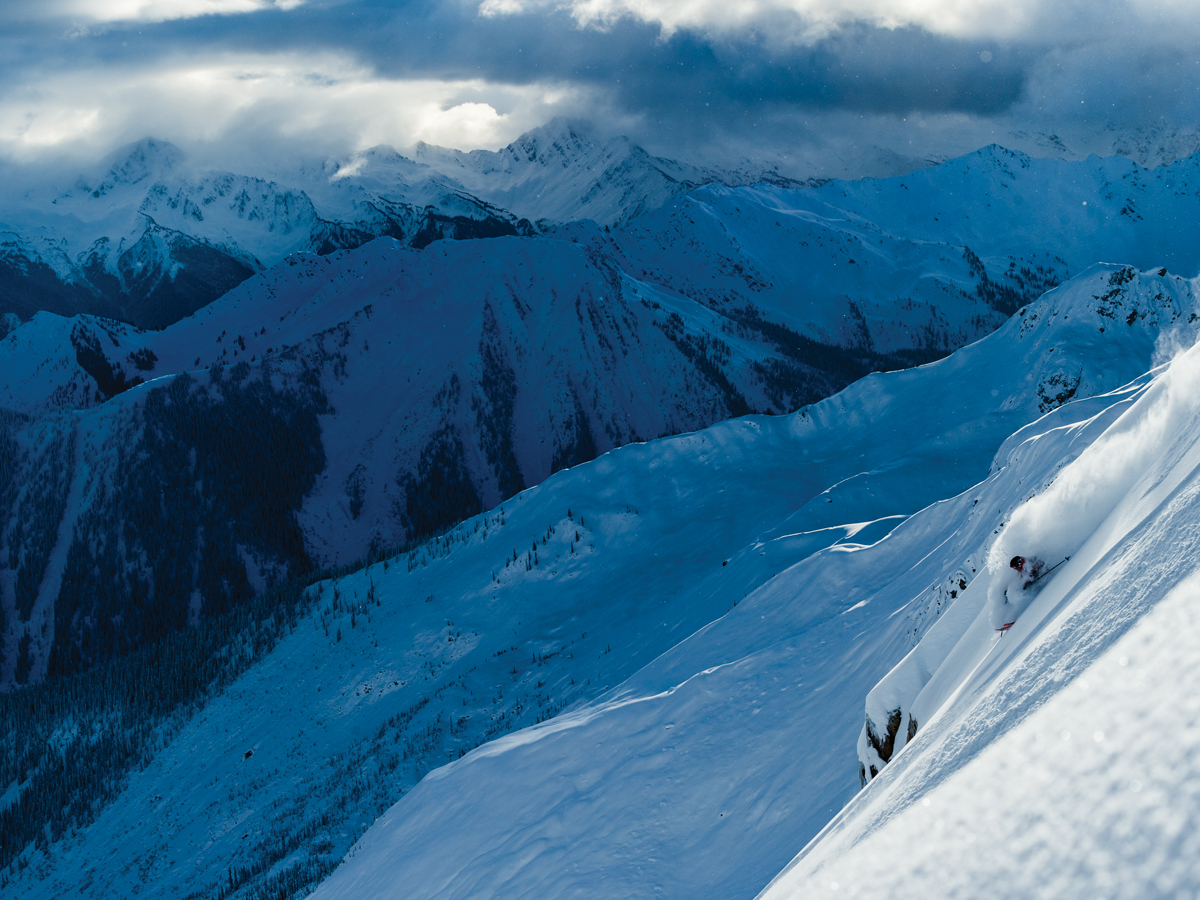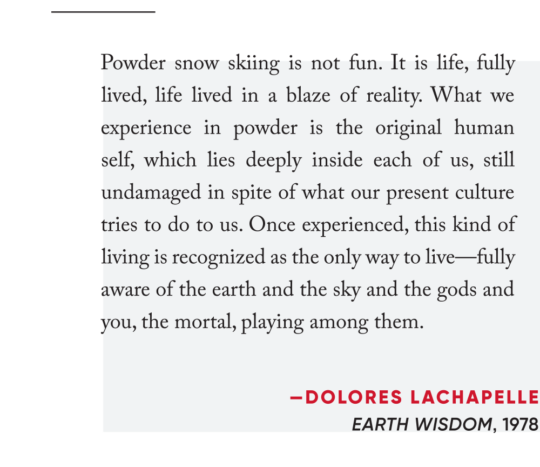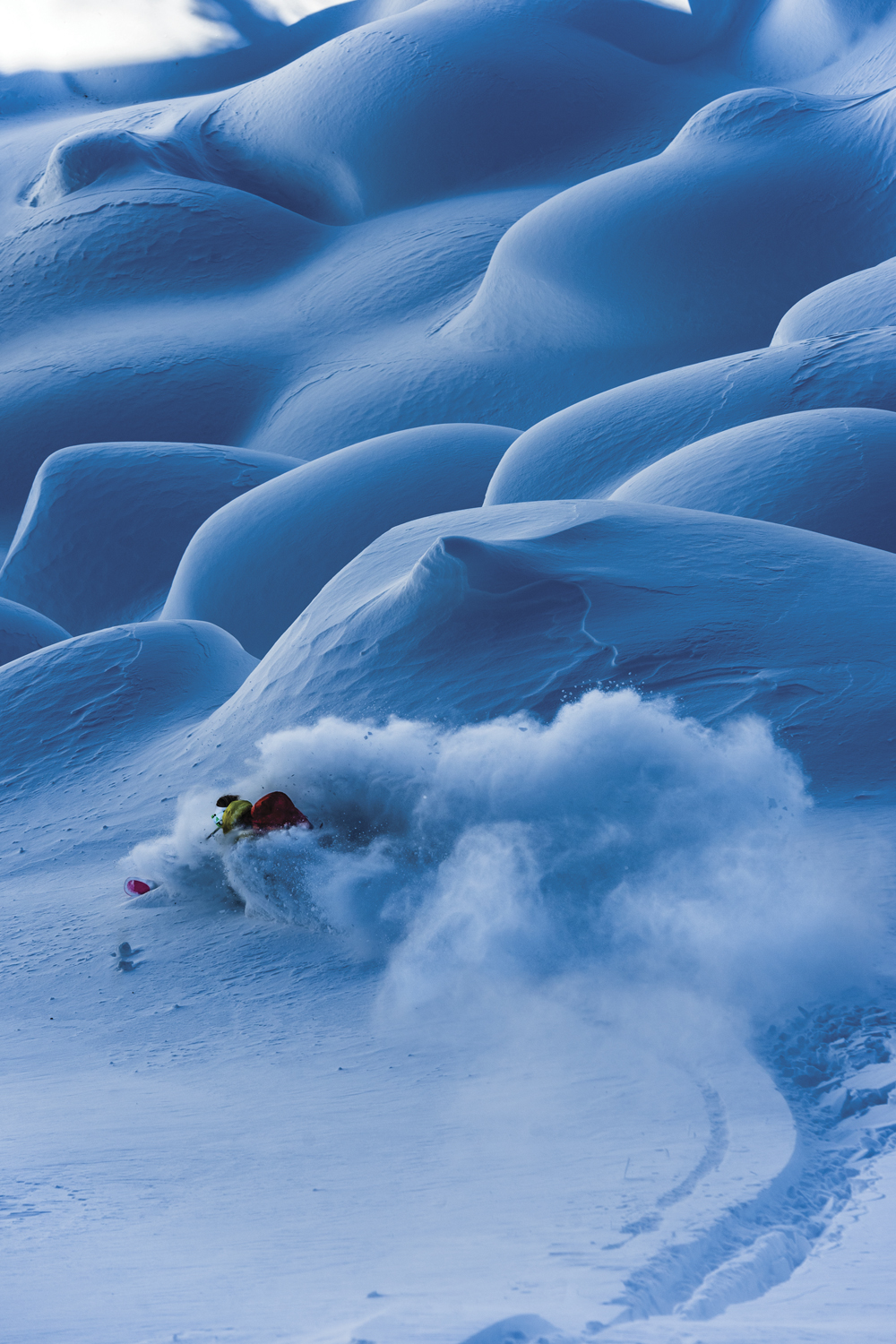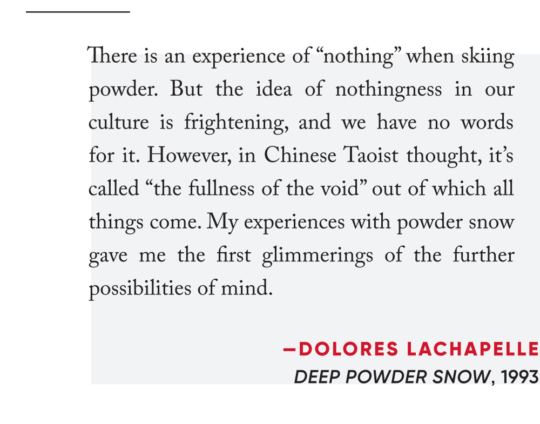

Anyone who has ever skied good powder is drawn to re-create the experience. But most don’t invest much thought into why that might be. As a student of ski history, I’ve put more thought into this question over the years than I probably should have, and I’ve also combed the tattered-newsprint past for the thoughts of others. Now, like after a good powder run, I’d like to share my insights.
First, there’s a lot about powder snow to recommend it. It’s natural, for one thing. Fresh. Clean. Sparkly. And it doesn’t hurt so much when you fall. But true aficionados will tell you it’s about a lot more than that. There’s a certain transcendence to moving through powder that cuts to the heart of the entire ski experience, something that can’t adequately be explained and, ultimately, must be experienced to fully understand.
Famously, many authors have stated that explaining powder skiing to someone who hasn’t done it is like trying to explain sex to a virgin. That may be a tired cliché, but I’ll give it a try anyway.

Powder skiing is about words but being unable to speak. About telling but being unable to describe. About how the silence that surrounds somehow amplifies the pounding of your heart, the rasping of your breath, the wind in the trees. It’s about involuntary grunts of effort and unconscious squeals of delight. It’s about inspiration. Desperation. Bad poetry. Broken marriages. Grins. Silliness. Frozen toes and ice-cream headaches. Magical turns. First tracks and lost skis. That feeling of submerging—and then flying, momentarily weightless. It’s about trudging, navigating and riding over, through and around boilerplate, sastrugi, crust, slab, crud and all manner of bad snow just to get to the good stuff. It’s a way of feeling. A way of thinking. A way of life. A way of sharing.
That last bit is important. The relationship of powder to the friends you experience it with is also hard to describe. Powder doyenne and philosopher Dolores LaChapelle said that the joy of skiing powder with friends is similar to the response of a lover receiving what he loves: an overflowing gratitude that produces the absolutely absurd smiles flashed at the bottom of a run. You rarely see these kind of grins anywhere else in life—not in someone exiting a tennis court, a golf course or a club after a fabulous evening of dancing.
Not bad for the price of a lift ticket or the effort to climb up a hill.

Many love the feelings engendered by powder so much they travel the world to experience them in as many different places as possible. How did this obsession get started?
The early sage of ski writing, Britain’s Sir Arnold Lunn, had plenty to say about the appeals of powder. But it wasn’t a torch readily taken up by early skiers as they struggled through the vagaries of equipment and technique while skiing was becoming a de facto sport in the early part of the 20th century. The Americans, however, knew when to pick up the ball and run with it. When Dartmouth College’s Dick Durrance invented the dipsy-doodle (a bouncy step-turn for maintaining control in deep snow) at Alta, Utah, in the early 1940s, true powder skiing was born. Others followed, including LaChapelle, who would become this new pursuit’s official psychologist. Years later, in the new millennium, skis would become fat, making powder easier to navigate. Seekers were no longer confined to the ranks of pros, or the rich, or even dirtbag ski bums—powder skiing went mainstream, and you could follow its current through the snow belt that wrapped around the globe.

When you make a pilgrimage to a new land and a new mountain range, you’re really looking for more than just exotic snow. What you’re generally seeking is to mix the culture of the moment with the friends of the day—an experiment in the laboratory of winter. Whether Europe, Alaska or New Zealand, basic ingredients are always the same: rock, ice, slopes, snow. And yet all are deliciously different as well: a new latitude, local light, strange forests, unique snow conditions. Resorts hoping to attract an international clientele have played on this theme for years, but many top players in the deep-powder sweepstakes have kept themselves a secret. That’s changing as travel operators tap into the public appetite for unique destinations, nature, wilderness and untracked powder. Once-upon-a-time sleepy corners of the planet like northern Japan and Bulgaria are seeing ever-increasing numbers of international powder seekers. Resorts in the U.S. and Europe that never thought of doing so have opened up special freeride areas to accommodate the influx of powderhounds demanding access to unmanaged terrain. And the explosion in backcountry operations—lodges, hut-to-hut systems, cat and heli-skiing—is unparalleled. In British Columbia alone, the industry’s capacity has more than doubled in a decade, and demand still far exceeds supply.
Compare that to the current glut of spas around the world that can’t be filled. I’m no salesman, but I’d say the restorative benefits of a slap in the face with cold snow might actually exceed those of aromatherapy or a line of hot rocks down your back.


This last quote might be a little too Zen for most, but LaChapelle has a point. When you get right down to it, skiing powder isn’t really about the outer experience but the inner. About that crucial intersection of mind and body, where thinking and feeling can’t be teased apart. About stopping at the bottom of a slope and looking back up at a line you’re convinced was the best run of your life, hanging on your pole straps and sucking air through a winded smile that doesn’t belong just to you but to everyone who’s ever stood in a similar spot with shaking legs and gasped, “Let’s do it again!”
Posted from FreeSkier



